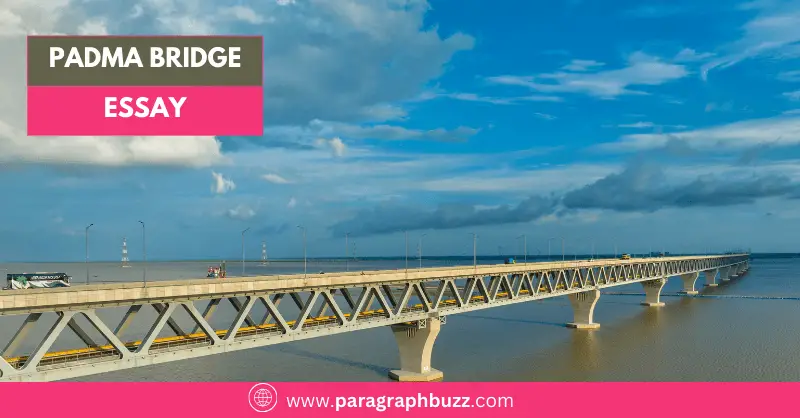Here’s a detailed essay on the Padma Bridge, incorporating a mix of descriptive, analytical, and persuasive elements.
The Padma Bridge: A Milestone in Bangladesh’s Development
Introduction
The Padma Bridge is one of the most significant infrastructural achievements in Bangladesh’s history. Spanning the mighty Padma River, this multi-purpose bridge connects the southwestern region to the rest of the country, revolutionizing trade, transportation, and economic growth. The bridge is not just a symbol of engineering excellence but also a testament to Bangladesh’s resilience and self-reliance.
Construction and Design
The Padma Bridge is a two-level structure with a road on the upper deck and a railway on the lower deck. It stretches 6.15 kilometers in length and is supported by 42 piers. The bridge was built using steel trusses and concrete piles, some of which were driven 122 meters deep, making it one of the deepest bridge foundations in the world. Constructed with a budget of over $3.6 billion, it was entirely financed by the Government of Bangladesh, without relying on foreign aid or loans—a bold step towards self-sufficiency.
Economic and Social Impact
Before the bridge’s construction, ferry services were the primary means of crossing the Padma River, causing long delays in travel and trade. Now, with the Padma Bridge:
- Travel time between Dhaka and the southwestern districts has been reduced by 4-5 hours.
- Business and trade have seen rapid growth, as goods can now be transported efficiently.
- Employment opportunities have expanded, with increased connectivity boosting industries like tourism, agriculture, and manufacturing.
The bridge is expected to increase Bangladesh’s GDP by 1.2%, benefiting more than 30 million people in the southwestern region.
Challenges and Overcoming Adversities
The journey to building the Padma Bridge was not easy. Initially, financial support was sought from the World Bank and other international organizations. However, due to allegations of corruption, funding was withdrawn. Instead of giving up, Bangladesh took on the challenge independently, proving its capability to execute mega projects. Engineers also faced significant technical difficulties due to the Padma River’s strong currents and unstable riverbeds, but with innovation and expertise, these obstacles were overcome.
A Symbol of National Pride
The successful completion of the Padma Bridge is a moment of pride for Bangladesh. It showcases the country’s progress in infrastructure and self-sufficiency. Furthermore, it serves as an inspiration for future projects, such as the Dhaka Metro Rail and Rupsha Railway Bridge.
Conclusion
The Padma Bridge is more than just a structure—it is a symbol of connectivity, progress, and determination. It has transformed lives, boosted the economy, and strengthened national unity. As Bangladesh moves towards becoming a middle-income country, the bridge stands as a powerful reminder that with dedication and resilience, even the biggest challenges can be conquered.



